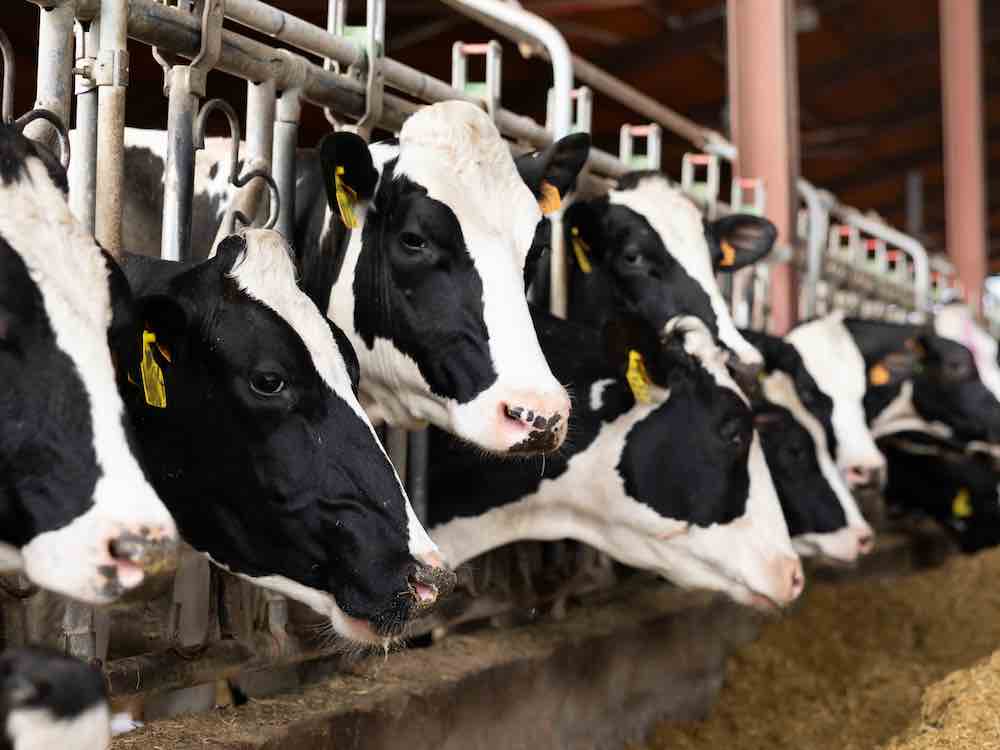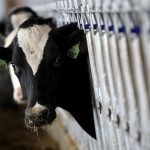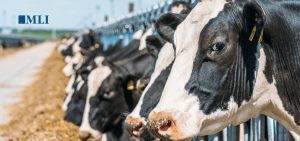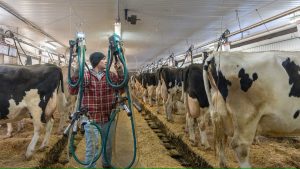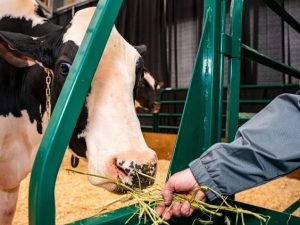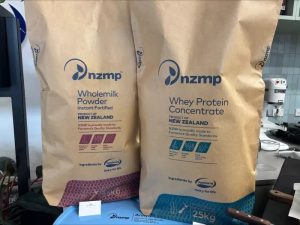
In about a month, the discovery of H5N1 avian flu in U.S. dairy cows, plus one human H5N1 case, plus H5N1 fragments in grocery-store milk, has gone from surprise to food scare to impending pandemic. Even if we’re lucky enough to avoid more human cases, the scare could incapacitate a vital American food resource — and reopen some political wounds that haven’t healed since COVID-19.
The outbreak was first a puzzling illness in dairy cows in northern Texas and Kansas. After testing for a number of other illnesses, the U.S. Department of Agriculture tested for H5N1. The official announcement was released on March 25, and H5N1 was then found in a dairy worker with conjunctivitis, which is commonly known as pink eye, but no more serious symptoms. Anecdotally, in the early weeks of the outbreak, almost every north Texas dairy operation with sick cows also had sick workers.
As of April 30, the USDA had identified 36 herds in nine states as positive for H5N1. The virus appears to be transmitted via milking, and in most cases H5N1 stays in the udders of infected cows. They seem to recover fairly quickly, and their milk doesn’t go into the market. Six cats who were fed colostrum and milk from infected cows also contracted H5N1, and three of them died with severe damage to their brains and other organs.
Meanwhile, tests on ground beef in H5N1-affected states showed all samples testing negative.
On April 24, the USDA reported that eight poultry farms in five states had birds infected with the precise cattle strain of H5N1; one of them was in Minnesota, which has not yet reported cases in cows.
H5N1 fragments found in grocery-store milk
The distribution of H5N1 is surely much wider than the USDA has found so far. According to a report in Stat, a medical news outlet, a veterinary epidemiologist named Andrew Bowman at Ohio State University took a graduate student on a 10-state tour of the Midwest, buying a total of 150 milk products from supermarket shelves. Fifty-eight of those samples were positive for viral RNA — particles of H5N1.
Since symptomatic cows’ milk doesn’t get to market, this means that cows that appeared healthy were transmitting H5N1 in their milk. Pasteurization seems to destroy the virus in milk products, but Bowman’s findings showed that H5N1 must be far more widespread than anyone had realized.
That poses a very big problem for the U.S. dairy foods industry. According to the trade journal DairyNews, “The U.S. dairy products market size was valued at US$55.5 billion in 2023 and is projected to surpass around US$73.03 billion by 2033.” (By comparison, Canada’s market size this year is estimated to reach C$15.5 billion.)
If you don’t test, you don’t flunk
Any threat to the dairy industry would be financially catastrophic and a political disaster. After seeing the economic damage from COVID-19, no one wants to be the origin of yet another potential pandemic. So dairy producers are understandably reluctant to have their cows tested.
Their workers are not necessarily eager to be tested either. Depending on the state, between 50 and 80 per cent of U.S. dairy workers are undocumented workers from Mexico and across Latin America. They do hard, dangerous, unpleasant work while living in fear of deportation, so they’re unlikely to seek medical care — least of all for seemingly minor annoyances like pink eye.
Nonetheless, the United States is dealing with a virus that can kill half the humans it infects. It is now spreading through a range of wild and domestic mammals, and every infection gives the virus another chance to mutate so that it could infect still more mammals — including us. That point was made in a May 1 USDA preprint that warned: “Continued transmission of H5N1 HPAI [highly pathogenic avian influenza] within dairy cattle increases the risk for infection and subsequent spread of the virus to human populations.”
It would be impossible to test all 9.3 million dairy cows in the 24 major dairy states, but it’s easy to imagine the public response to not dozens but hundreds of herds infected, and scores of dairy workers coming down with possibly fatal symptoms.
Understandably, both owners and workers in any industry worry about the impact of a new disease outbreak on their own income, and prefer to resist testing that might discourage consumers from buying their products. But denial will come back to haunt them if an outbreak worsens and can’t be concealed. Everyone in the industry will suffer.
‘We have to go through it’
A recent editorial in the trade journal Bovine Veterinarian quotes a vet who argues: “You know, we can’t go over it. We can’t go around it. We can’t go under it. We have to go through it…. Don’t hide.” But many dairy producers will hide, hoping that somehow the problem will go away.
For now, it seems that pasteurization does indeed destroy H5N1 in milk and milk products, just as thorough cooking destroys it in eggs and chicken meat. Persuasively explained, this finding might ease consumer anxiety. But we can also expect waves of disinformation raising doubts about anything said by any government agency. Drinking raw milk will, like refusing vaccination, become an assertion of personal liberty.
It might be tempting to treat infections dairy workers suffer as just another occupational hazard, especially if they’re rarely reported.
But as the USDA preprint warned, every infection moving from cow to human gives the virus more chances to mutate into a form that can move from human to human. Even a handful of fatal H5N1 cases in dairy workers would set off a consumer boycott of dairy products, not to mention still more disinformation campaigns blaming politicians and health agencies.
For now, Canada’s in the clear
We in Canada are so far in the clear. The Canadian Food Inspection Agency said in mid-April that it hadn’t detected H5N1 in dairy cows or any other livestock. Now it’s actively searching for H5N1 in dairy cattle and in grocery-store milk.
Importing infected cattle from the United States could change the situation, but Canada imports few if any American dairy cows. The trade is in dairy products, not in livestock.
We have one factor working in our favour. Unlike in the United States, only 1.6 per cent of Canadian dairy workers are foreign workers. Any H5N1 infections among dairy workers would (one hopes) be diagnosed and reported at once, while prompting still more surveillance and testing.
The political implications in both the United States and Canada are daunting. In the United States, most of the H5N1-positive states are run by Republicans who will find a way to blame Joe Biden’s Democrats for the outbreak and the government’s response. (If Donald Trump wins the presidential election, matters will only get worse.) Justin Trudeau’s Liberals will come under attack by Pierre Poilievre’s Conservatives for perceived failure to prepare and prevent similar outbreaks here — especially in Ontario and Quebec, where dairy farmers have political clout.
Health agencies will be under intense pressure from their political masters to minimize the problem, while also trying to “follow the science,” which may tell them they’re facing a disaster.
Both Canada and the United States have one good opportunity to reduce the pressure: risk communication. It was horribly botched in the early days of the COVID-19 pandemic, especially by Donald Trump, but explaining H5N1 honestly and clearly, in terms that ordinary people can understand, should enable those people to take the right steps to reduce their risk of infection.
To be that persuasive, politicians and public health officials will also have to admit that they’ve communicated very badly since COVID-19 arrived. That confession may be very hard to make.
Good risk communication, however, would sharply mitigate any harm done by H5N1, and prepare us all to face whatever virus triggers the inevitable pandemic in our future.
You can now read the most important #news on #eDairyNews #Whatsapp channels!!!
🇺🇸 eDairy News INGLÊS: https://whatsapp.com/channel/0029VaKsjzGDTkJyIN6hcP1K
